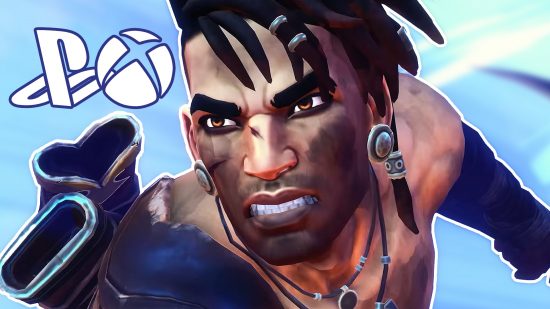‘Accessibility’ and ‘approachability’ are commonly misused when talking about the latest games. Whereas one concerns itself with improving the quality of life for players with a disability, the other seeks to make a game easier to engage with for newcomers to a genre. In Prince of Persia The Lost Crown, Ubisoft has managed to incorporate one seemingly minor feature that ticks both boxes on PS5 and Xbox, and it’s a game-changer: Memory Shards.
Having finally had the opportunity to sit down with The Lost Crown’s demo on PS5 amidst the flurry of reviews excitedly doing the rounds, I was left relishing the full release even more. Even from this small snippet, I can already tell it’s classic Prince of Persia draped in the robes of the best Metroidvania games, and not the other way around. But while I could speak to the exquisite movement flow, the flashy combat counters, and the return of big spiky obstacles, it’s the game’s Memory Shard system that I can’t stop thinking about.
In Prince of Persia The Lost Crown, Memory Shards take a screenshot of the current game state before pinning it to your map. This might just sound like a nice quality-of-life addition to some, or a terrible bastardization of the genre’s playbook to others. But for myself and many others who struggle with memory for various reasons, it’s an absolute dream come true.
As someone with a terrible sense of direction and a working memory that doesn’t work at the best of times, I’ve historically struggled with navigating my way around Metroidvanias. Whether it’s Ori’s forest or the bug-bustling world of Hallownest in Hollow Knight, attempting to recall obstructed pathways or POIs I’d want to revisit later – even those marked with pins on the map – has often made for a frustrating experience. There’s joy in rediscovering them later, sure, but for me it’s a case of the cons outweighing the pros.

The most innovative products or features are always the ones that make you go ‘why didn’t we think of this sooner?’ Adding snaps to a Metroidvania map as we see in The Lost Crown is one of them. While you won’t be able to screenshot every facet of the puzzle platformer – you’re limited to a finite number of active Memory Shards at any one time – you will at least be able to make a more concrete note of key areas that can easily be forgotten.
Alternatively, if you’re really struggling with where to go next then you can always toggle on The Lost Crown’s optional guided mode – another excellent feature highlighted in Ubi’s accessibility deep dive video. Yes, getting hopelessly lost is part of the Metroidvania experience but, let’s be real, this isn’t Silent Hill 2. Games are made to be enjoyed by players, and if there’s a way to remove pain points for those who want or need them gone, then this is the sort of game design I will always champion where possible.
Between the micro-adjustments available to combat, platforming aids, and more, Ubisoft is out here doing the most when it comes to Prince of Persia The Lost Crown. Memory Shards may just be the cherry on top for most, but they’re arguably the game’s most revolutionary feature. As Elden Ring became a blueprint for the best open world games, I hope The Lost Crown can prove that it’s possible to make Metroidvanias accessible and approachable while retaining the essence of what makes them so challenging.
